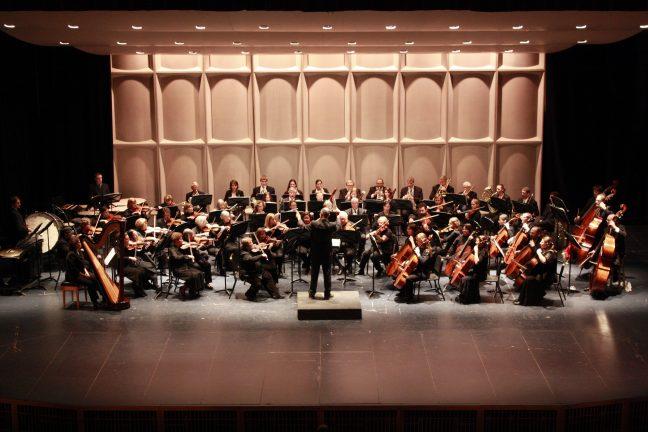The Wisconsin Union Theater kicked off their 103rd annual concert series Sept. 27 with a major headliner. The Emerson Quarter, one of the world’s longest tenured and highest accomplished string quartets, graced the stage of Memorial Union’s Shannon Hall as part of the their final concert tour.
The quartet, currently made up of violinists Eugene Drucker and Philip Setzer, violist Lawrence Dutton and cellist Paul Watkins, has been performing since the 1976 when they met at the Julliard School of Music in New York City. After over four decades of producing original music, racking up countless awards and performing in music halls all around the globe, the group has decided to hang up their bows and turn their attention to instructing the next generation of aspiring musicians.
But, before closing the curtain on an illustrious career of over thirty acclaimed recordings, nine Grammy awards, an Avery Fisher Prize and Musical America’s “Ensemble of the Year” award, the quartet embarks on an international farewell tour with stops in London, Madrid, Athens and — yes — Madison, Wisconsin.
The Emerson Quartet was met with an energetic round of applause upon taking the stage. The group assumed their position and swiftly began their performance with Ludwig van Beethoven’s “Razumovsky.” No.2. The piece, commissioned in 1806 by Count Andrey Razumovsky, the Russian ambassador to Vienna, was among the first written works to be performed by a professional string quartet.
The second work of the “Razumovsky” collection is heralded as one of the toughest Beethoven pieces given its demanding mood and pace variations. Set in E minor, the song starts out vigorously with a tone-setting allegro, but gradually sheds its pace for a slower, theme-heavy bridge which includes perhaps the best melody of the night played by violinist Eugene Drucker. The song is concluded with a tumultuous shift back to a lighthearted and rather tranquil presto which bookends Beethoven’s work.
An admirable quality of the group is their endurance. The ability to play pieces of classic music which demand one’s full respect and constant attention to detail is something that is certainly worth commending.
It is safe to say the Emerson Quartet won the hearts of the audience in their opening forty-five minute performance, underlining why the Emerson Quartet is an inundation of world-class talent.
Following a brief intermission, the Emerson Quartet retook the stage for the final part of their performance. This piece, B-flat major Op.130, was another tribute to Beethoven and consists of six original elements.
The sixth is the controversial “Gross Fuge” which 19th century audiences deemed to be “too complex and difficult.” As a result, Beethoven published the work independently as Op. 133. Once met with criticism, “Gross Fuge” is now treated as one of the cornerstones of Western classic musical.
“Gross Fuge” served as the show’s farewell gift to fans from the Emerson Quartet. While the first four movements of Op.130 showcase the reserved style of Beethoven, the 14-minute-long “Gross Fuge” is a different beast. A series of slow pauses with sudden interjections and restless pace creates a beautiful tension on stage.
The group’s final notes were met with a deserved standing applause from the Shannon Hall crowd that seemed to last an eternity.
The Emerson Quartet is the first of the many talented groups and individual performers who are scheduled to perform this fall as part of the Wisconsin Union Theater’s longstanding concert series.
The next few weeks bring vibraphonist Joel Ross Oct. 16, followed by Cory Henry Nov. 3. For tickets and more information about the upcoming performances, visit the Wisconsin Union Theater website and follow their associated social media accounts.


